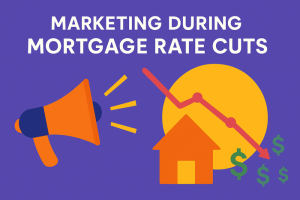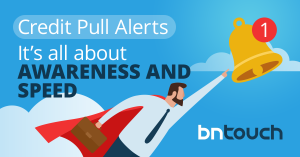Summary
This article explores social media strategies that help loan officers expand their reach and engage with potential clients. It highlights content creation, brand building, and interaction on platforms like Facebook and LinkedIn. By implementing these tactics, loan officers can effectively leverage social media to grow their business.
When it comes to marketing your mortgage business online, inevitably the conversation of social media marketing for loan officers is going to come up. While only a few years ago mortgage brokers may have scoffed at the time spent on social media as a waste, history has proven that social media is a fantastic tool to build your brokerage’s brand, educate and delight potential new clients and establish yourself as a thought leader in your marketplace. But with so many platforms emerging on a seemingly non-stop basis, which one(s) should you choose? What types of content is best to put on your social media profiles? How can you automate the process of posting so it doesn’t take up too much time? And most importantly, how can you track the results to ensure that your efforts are leading to a bigger bottom line? Today we’ll take a look at all these things.
Choosing The Right Social Platforms
One of the most natural inclinations many mortgage brokers have when considering what social platforms to fire up and start using is the desire to be on all of them. The truth, though, is you want to avoid this desire. The number of social media platforms currently out there is vast. There is also a seemingly endless line of “the next greatest platform” emerging over and over. Trying to be the “master of all social platforms” may actually inhibit your ability to move the needle for a couple of reasons that you should consider.
Your Ideal Prospects Hang Out In Specific Places
Perhaps the most important thing you should consider when deciding which social platforms you want to invest time and resources in is the fact that you have an ideal prospect. In defining that ideal prospect you have built out a persona for that person. A piece of that persona has to do with the types of media they absorb, the technology they use, etc. By definition, you are a busy person. Rather than using a shotgun approach, consider where your ideal potential clients are hanging out and focus on building out profiles and content in those places.
For instance, if your brokerage focuses on funding loans for Real Estate Investors that are buying vacant properties, fixing them up, and flipping them, setting up social media accounts on platforms like Facebook, Instagram and Pinterest may not be worth your time. While it’s true an investor may spend some time on these platforms, a platform that is more business-oriented, such as LinkedIn, maybe a more targeted area where you can post Real Estate Investment content that they will likely see, as this particular persona group tends to spend a lot of time on the LinkedIn platform.
Every Platform Is Built In A Particular Framework
Another thing to consider when looking at the time you have available to devote to your social media marketing efforts and optimizing it to its fullest extent is the contextual frameworks of the platforms themselves. Every social media platform is built in a different framework. Pinterest for example revolves around people that find interesting things on the internet and post links to those things on their boards. Instagram revolves completely around sharing photographs on your feed. Twitter is a microblogging platform allowing you to comment on something in particular and possibly link out to it so people can read/learn more. Every framework requires a specific type of content that needs to be put into it. With all these different types of required content, it’s easy to see how quickly your time can be sucked up trying to convert existing content to fit within all these frameworks, or even worse, creating content specific to each framework.
Once you’ve found the platforms your ideal potential clients are hanging out on, one great thing is to look at the types of content you are already creating, figure out where your strengths are in building that content, and then analyzing which platforms fit best with the type of content you are able to produce. For example, maybe you are great at writing blogs about the mortgage industry, where the market is, and where you see it going. Additionally, maybe you’ve learned that your ideal clients are mostly on Facebook, Instagram, and Twitter. In order to maximize the blog content you are putting out there, Facebook and Twitter would be great channels to focus on as both platforms have native, built-in ways you can share that content. Even though the urge to have an Instagram account and be in front of your ideal potential clients more frequently is a valid one, being that you can’t link URLs in Instagram posts and it’s a visual and not written type of platform, doing so would only cause you to have to create an entirely different line of content for that platform.
Social Media Mortgage Content Examples
Now that we’ve discussed platforms, let’s discuss content. What type of content should you be posting on your chosen social media profiles? While the contextual framework of the platform mentioned above is critical to consider, there are some types of mortgage social media content that tend to perform very well. Let’s take a look at a few examples.
Infographics

Infographics are a fantastic type of content to put on your social media channels for many reasons. First off, infographics are focused on taking a big concept and breaking it down into digestible visual chunks that the average person can absorb and understand in a matter of a minute or so. Remember. Everyone is busy. We don’t have a lot of time to invest in a post from someone that we don’t yet know, like, and trust.
Infographics also offer the benefit of pattern disruption. Pattern disruption is what makes someone stop scrolling down a social media feed to stop and look. By utilizing vivid colors, illustrations, percentages, and even eye-catching charts, infographics give you an edge in attracting the attention of prospective clients and getting them to absorb and engage with your content.
Blog Posts

Everyone knows in order to get someone to do business with you, they have to know, like, and trust you. The easiest way to do this is to market yourself by teaching people things that are most relevant and valuable to them. Doing so makes you a thought leader in your space and someone that they are going to gravitate to when it comes time for them to seek home financing. Blogs are a perfect vehicle for this.
Regularly posting blog posts on topics that address the goals, desires, fears, and needs of your ideal clients is a great way to not only flex your “expert muscles,” but also keep your ideal prospects engaged and coming back to your social media profiles to see what you are going to share with them next. The more you engage them, the more they will grow to trust you as a trusted resource for all their home financing needs.
Social Proof

The truth is, you can talk about all the great things you can do for your clients all day long. The second, though, is when somebody else shares with people what you did for them. You’ll see it holds a lot more water. Social proof of your services in action is a great way to make your skills more legitimate in the eyes of prospective clients, pushing them in the direction of contacting you for a consultation.
Making it a practice to get a testimonial from every client every time you close a deal is not only a great idea for social media content, but it’s also one of the easiest forms of content to create. Getting in this habit will not only make your engagements increase, but it will also make the cadence of your posts more regular and save you time in the long run.
Social Media Automation Platforms
So now that you know where your prospects are, what platforms are best suited for content you like to create, and what types of content draw the most attention, let’s talk about optimization. The most important factor in any marketing endeavor is consistency. Without a way to pre-schedule your social media posts, you are destined to get busy with your regular day-to-day work, forget to consistently post, and never make headway in your social media efforts. This is where automation platforms come in.
Social media automation platforms allow you to connect them with the social media platforms you are using. You can take the content you’ve prepared ahead of time and load it in, specifying which platforms the content should post to and also the day and time you would like each post to show up on your social media feeds.
Most likely you wear many hats in your mortgage business. Certainly not every deal runs smoothly according to plan. Because of this, social media automation platforms are a critical tool in your market arsenal that will help you maintain the consistency you need in your social media marketing to keep your brand awareness and engagement up online. Many brokers that utilize social media automation platforms spend a day every month planning out the next month’s worth of posts, getting the content ready and pre-scheduling it to post. Getting in this habit will ensure that your social media marketing never slips through the cracks.
Tracking Social Media Results
At the end of the day, everything you do needs to be measurable. After all, if something isn’t bringing you results, you need to know about it. You then have the opportunity to either adjust the content you are putting out there in the hopes of grabbing the attention of your ideal prospective clients, or possibly even deciding that you want to give up this marketing effort altogether. But if you can’t measure it, you can’t make this decision in an informed fashion.
Because of this, you need to be able to get analytics on the posts you are putting out there. The key things you want to look at are things like the number of views (if your post is a video), engagement (how many people have liked, shared, or commented on a particular post), the number of clicks (if for instance, you linked a blog article on your website to a post), and the comments on the posts themselves.
Most social media automation platforms have analytics built into them. Ideally, you should look for platforms that have this “all-inclusive” feature set. It will not only make your tracking efforts easier but will also eliminate the hassle of having to pay a monthly fee for a separate platform that specifically tracks social media analytics.
Social Media Isn’t Going Anywhere In 2021
For anyone that thinks social media was just a temporary craze that is going to subside, think again. Social media isn’t going anywhere. It is only going to become more prevalent and the opportunities for you to get in front of your ideal potential clients and grow your mortgage business are only going to increase. Taking this methodical approach to social media marketing will give you a realistic way you can manage this and fit it into your busy day-to-day schedule, ensuring success.
Key Takeaways
- Leverage multiple social platforms for wider reach.
Using platforms like Facebook, Instagram, and LinkedIn increases visibility and client engagement.
- Engage consistently with quality content.
Regular, valuable content ensures that you stay top-of-mind and build trust with your audience.
- Utilize paid advertising for targeted outreach.
Social media ads allow loan officers to reach specific demographics, ensuring that their marketing efforts are effective.
Commonly Asked Questions
- How has social media marketing evolved for loan officers in 2021?
Social media marketing for loan officers in 2021 has become more focused on building relationships and engaging with potential clients. Platforms like Facebook, LinkedIn, and Instagram offer loan officers an opportunity to provide valuable content, showcase their expertise, and connect with a broader audience.
- What strategies can loan officers use to succeed on social media?
Loan officers can succeed by sharing educational content, customer testimonials, and responding promptly to inquiries. Creating a consistent posting schedule and engaging with followers helps build trust and visibility, which can generate more leads.
- How important is targeting the right audience on social media?
Targeting the right audience on social media ensures that loan officers reach potential clients who are more likely to need their services. Effective targeting through paid ads and content strategy helps maximize marketing efforts and reduce wasted resources.
- What role do visual elements play in social media marketing for loan officers?
Visual elements like infographics, videos, and images help loan officers stand out and grab the attention of their audience. Posts that include visual content are more likely to be shared and engaged with, leading to higher visibility and stronger connections with followers.





